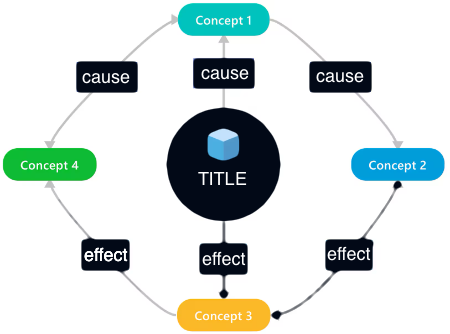How to Take 📝 Notes
Note taking is a process to collect information from different learning contexts. The most effective note taking method is to recap what you've just learnt. So, make notes to actively remember what was covered and explain those things that you want to remember — to yourself. 🙇

Cognitive psychology, linguistics and teaching disciplines recognise four main elements of note taking:
- Principal functions: writing to learn & recognise what's not known;
- Note taking strategies used by learners;
- Factors affecting comprehension & learning via note taking;
- Contexts that allow effective note taking.
1. Principal Functions of Note Taking 🫵
To record information and/or to aid reflection (beyond simple memory aid e.g., shopping lists, or diarised records of action) and build up external memory in a reusable form.
Noting things to remember/understand is done during and event to aid the reflection done after. Think of notes as being like a rough draft in that they allow information to be coded and helping the development of solutions.
There are two essential write-to-learn functions: (1) notes to stabilise the knowledge to be acquired and reproduced during ‘course question’ type examinations and (2) notes to effectively resolve problems, whether this is understanding complex documents, writing reports, or solving equations.
2. Note Taking Strategies? 🫵
Unless everything is said at dictation speed, or you have mad shorthand skills, lecturers don't speak slowly enough to write everything down. Accordingly, students develop processes like abbreviations etc., while markers in a lecturer’s text signal the importance of what is being said. Note-takers are attentive to these markers, which influence the quantity of notes taken. For example …
- Writing on the board;
- Dictation: slow delivery, low vocal register;
- A title of a section or a list;
- Definitions, catch phrases;
- Macro-textual indicators — 'Firstly, Secondly' etc.
Alongside these indicators triggering notes, assume some forms that discourage notes:
- Interactions between teacher and students etc.
- Prosodic phenomena — parentheses, digressions.
- Parentheses or asides — sequences not contributing to what's said.
- Hesitations in speaking — probably indicate that it's not planned.
- Para-verbal indicators — teacher puts aside notes or walks around.
In the case of reading texts, the effect of elements on comprehension, such as subtitle, numbering and introductory expressions such as ‘There are four types of ...’ has been demonstrated.
3. Factors in Comprehension 🫵
In general, students take notes in order to record information to learn at a later date. However, the result of taking notes is more than the production of a passive external information store, as the note taking action itself is part of the memorisation process and results in the creation of internal storage.
In all of the situations that have been studied, the manner in which notes are taken is of the utmost importance. A matrix structure for recording information has proved to be more beneficial than an outline structure, which is in turn more beneficial than linear structures.
The high degree of concentration for notes requires the attention to be more precisely focused on the access, sorting and coding of information than it would be when simply listening to a speaker or reading a paper.
Students refer to taking notes as helping them remain attentive.

The highly favourable impact of a matrix structure is similar to that obtained by the production of a keyword tree diagram (concept map, above) during note taking. The reworking of notes in order to reinforce the structuring of knowledge also aides their effectiveness.
By spatially organising information on the page, conceptual links between pieces of information are increased. You can make stronger connections between information being received and what's already in memory.
Furthermore, a later review of the notes, whether or not it is associated with a re-organisation of the information, reinforces the integration of the knowledge and its storage in the long-term memory.
The carrying out of intellectually complex tasks, such as solving of problems and reasoning, can also involve the use of notes as a form of external memory processes. Notes allow interim pieces of information to be stabilised for use at a later stage in the task, thereby easing the load on working memory.
4. Contexts — Learning to Write. 🫵
The functional complexity of note taking is such that at least three more skills need to be taught:
i. Comprehension Through Note Taking. 🫵
Most commonly through the production of summaries — sorting, selecting and combining information contained in a text with a standardised language format. A student who masters the art of summarising will be able to take notes in the form of data sheets, but summarising is a difficult exercise.
Learning to extract information from a text then sort and classify it into a hierarchy is beneficial. The effectiveness of this training is further enhanced by combining and generalising the important pieces of information.
ii. Producing Notes. 🫵
Spelling, syntax, and the layout of information on the page are subject to significant changes — abbreviations should be understandable and unambiguous.
Learning how to take notes from a spoken presentation is a slow and gradual process with four major difficulties as well as the pedagogical orientations making it possible to deal with them:
- Slowness of the graphomotricity (speed up fine motor skills)
- Pregnance of the linearity (schematise notes as diagrams)
- Interest in the source document (how to reword better)
- Juxtaposition of information (how to sort it out)
iii. Conscious Management of the Activity as a Whole 🫵
The complexity of the cognitive operations and the knowledge involved requires note-takers actively control what they are doing and master the way they work. This metacognitive knowledge allows them to plan their activity, evaluate, regulate and regurgitate.

Introduction to selecting information 🫵
- Eliminate redundancies
- Title each paragraph
This is based on the paper Note Taking and Learning: A Summary of Research by Françoise Boch and Annie Piolat, 2005. There are differences with Barbara Oakley's work, for example, as she dismisses highlighting entirely …
The act of highlighting is no different from waving your hand over the page.
But if you do it to highlight things you need to note (see what we did there 😂?) reflect on later — like a summary or to investigate further — it's different.
So, make notes in useful ways … not so much during a lecture as that's passive, but afterwards — reflect on your notes with recall to reinforce neural pathways by replaying the lecture in your head and explaining it back to yourself — explaining what you’ve learned about a particular concept.
- ↜ Previous: Cancel 🧑🎤 Cancel 🧑🎤 Culture
- ↝ Next: Bondi Water Micr🦠plastic Blues